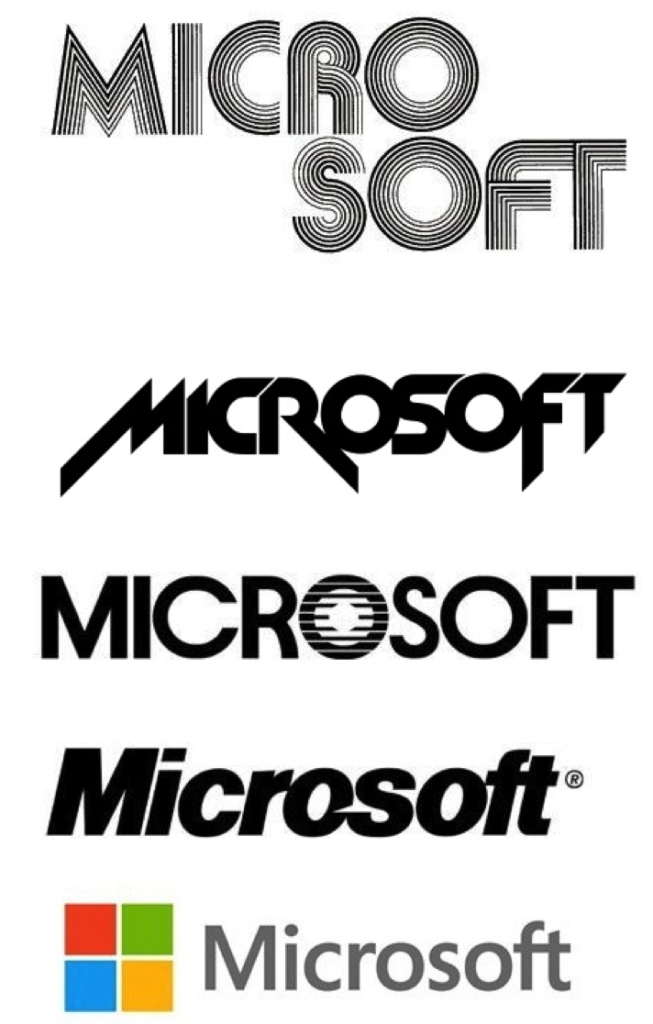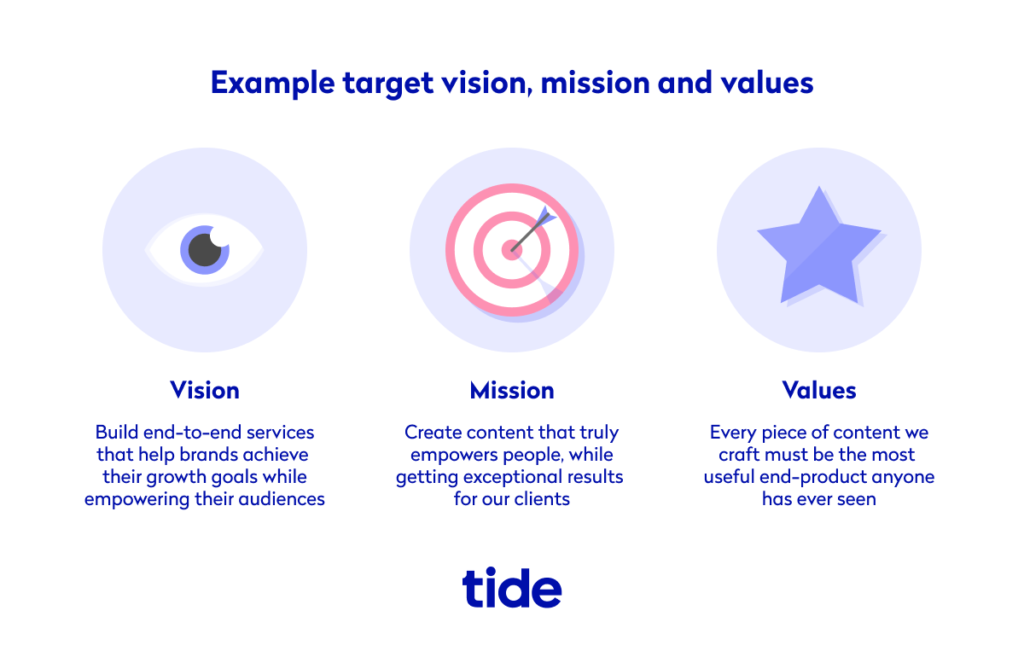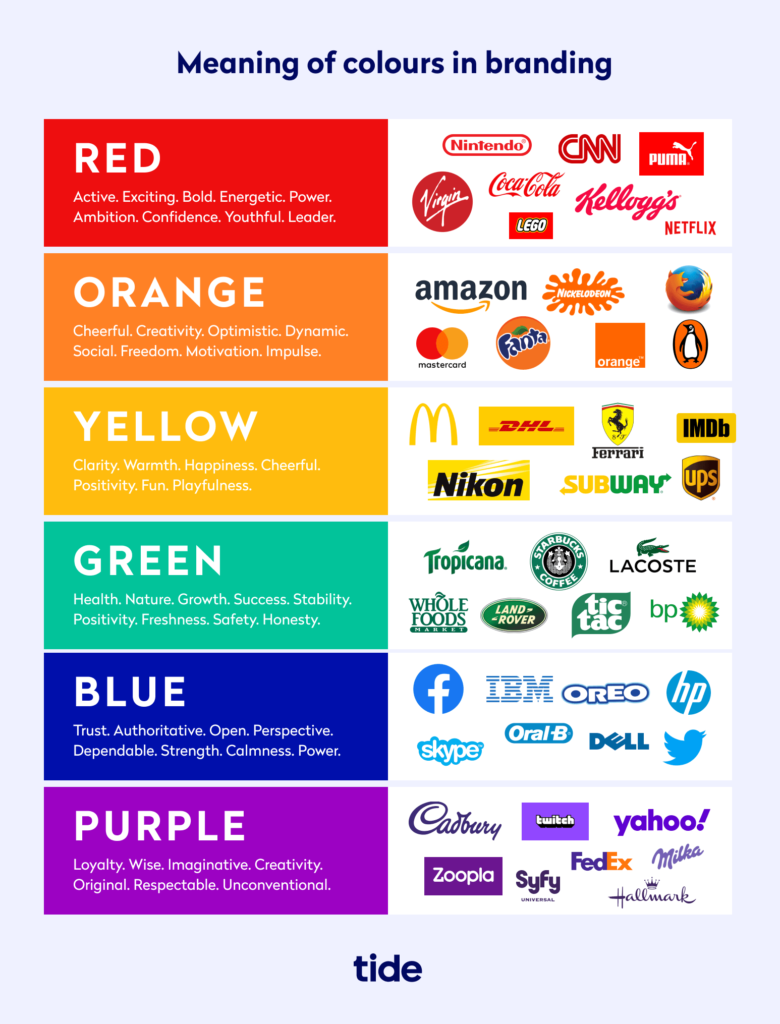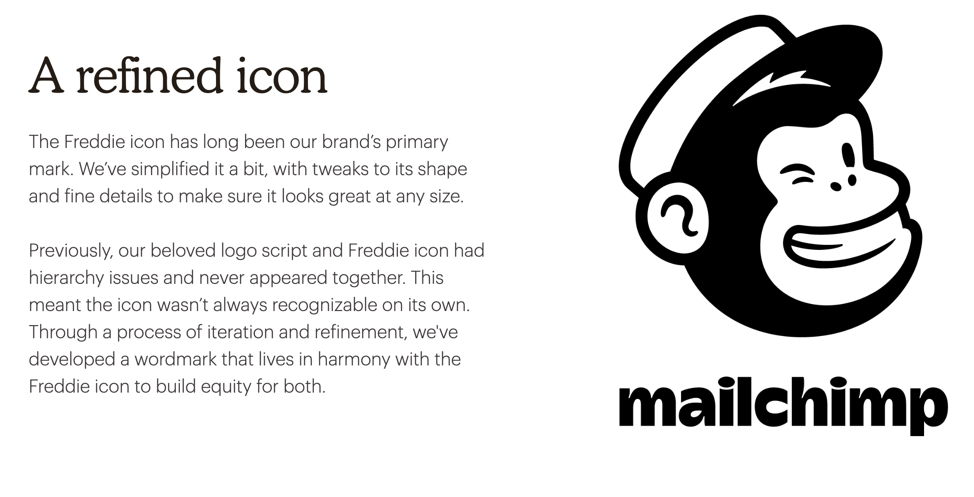
How to rebrand your company: a 5-step approach

Rebranding is a natural part of a company’s evolution. Beliefs, priorities, tastes, and outlooks all change as your business grows and these changes need to be reflected in your brand.
Perhaps your target audience is shifting, your main product offering is changing, or your company is simply evolving beyond its original brand presence.
Rebranding can be an exciting undertaking. It gives you an opportunity to refresh your image, strengthen your market position, boost reach or even improve your bottom line.
But when is the right time to implement these changes and how drastic does a rebrand need to be?
In this post, we’ll cover the basics of what makes up a brand, the main reasons for rebranding, the different approaches you can take when initiating a new concept, and detail our six-step approach for making your rebrand a success.
Table of contents
- What makes up a brand
- Why should you consider rebranding your company?
- Which rebranding approach should you choose?
- How to rebrand your company: A five-step approach
- Wrapping up
What makes up a brand?
Before we can dive into why you should consider a rebrand, we need to understand what exactly makes up a brand in the first place.
A brand is so much more than simply choosing a logo, colours, fonts, imagery, packaging, messaging, and so on. Your brand is your business’s identity.
It encompasses tone of voice, the way you communicate your mission and goals, the way you portray yourself across social mediums, your company’s culture, your customer service, the images and sounds you choose to use in communications, how you handle a misstep, the quality of your products and services, and more.
Your brand identity should align with your new business’s purpose, mission and goals. Before creating anything, it’s best practice to conduct thorough market research to gain an understanding of your target audience’s cultural tensions, ideals and needs. After all, you are creating your brand for them, so it makes sense to recognize their desires before packaging your solution.
Having a strong brand identity helps you not only engage with your target audience, but also helps to differentiate your brand from your competitor’s in the space.
Your brand identity should answer the following questions:
- What’s your purpose?
- What do you stand for?
- What makes you special?
- Why should a customer choose your produce or service over the competition?
- What’s your personality?
- How will you be remembered?
Your brand should clearly communicate your purpose, be memorable, and be consistent.
Top Tip: For a detailed step-by-step guide on how exactly to build your brand from scratch, including how to choose your business name, write your mission statement and slogan, pick your focus and personality, choose the look of your brand, and more, read our 7-step guide to building a brand that customers love 💥
Creating or updating brand guidelines
Once you do perfect your brand identity, it’s smart to create a brand book. A brand book is a document where you will store all of the elements that make up your brand. It will act as a guideline for your employees to ensure they remain consistent in their messaging when representing your brand.
Whether you’re creating your brand identity from scratch or going through a rebrand, you need brand guidelines to ensure your image is consistent throughout everything you do.
Your brand guidelines should include:
- An overview of your brand’s history and values
- Your vision and mission statement
- Your tone of voice including examples
- Details on your logo, including where and how to use it, minimum sizes, spacing, colour variations and unacceptable uses
- Your colour palette including colour breakdowns for different channels
- Your typestyle including specific fonts and details on the font family
- Image and photography style including examples
- Details on business cards, forms and letterhead designs, including how logos and fonts are used
Keep your brand guidelines handy whenever you’re creating any kind of brand material, whether that’s a promotional product, a marketing campaign, a blog post or a landing page. Generating consistent messaging will serve to strengthen your brand identity and recognition.
The difference between branding and brand identity
As you can see, brand identity and branding are intermixed. Brand identity outlines your company’s mission, purpose and personality, while branding is the specific visuals that make up a brand’s look and feel.
To simplify, we ask you to picture a house. Branding represents all of the basic elements, like the colours, resources, style, etc. that make up the house’s interior and exterior aesthetic. Brand identity, therefore, is how you talk about the house, explain your vision and purpose behind choosing to build it, and describe the way you hope people feel when looking at and walking through the home.
When it comes to business success, one cannot exist without the other.
Top Tip: Taking your product or service to market and successfully attracting your target audience is no easy feat. Even with a healthy brand identity, you need to build customer personas, strategically position your brand to stand out from the competition, and generate interest through targeted messaging. To learn more about how to do this, read our guide on how to build a go-to-market strategy that attracts ideal customers 🧲
Why should you consider rebranding your company?
First, let’s consider the instances that don’t warrant a rebrand.
If you’re finding that sales are slow or you’re having a tough time getting noticed, you might want to revisit your marketing or brand strategy to ensure it truly aligns with your target audience’s values and needs. Your existing brand strategy and marketing materials may be exceptional, but if your efforts have failed to meaningfully align with your target audience, you won’t see tangible results.
There may be a simple fix to this problem, such as focusing on new channels or tweaking the language that you use.
Top Tip: If you’re just starting out and looking to generate brand interest through targeted marketing, gain tips and insights from our beginners guide to digital marketing strategy 💻
You should also avoid rebranding if your end goal is to put a bandaid on a bigger problem, or if you’re simply bored and looking to shake things up. It’s completely natural to crave a change after seeing the same colours, logo, messaging and representation since day dot.
But, as brand recognition is a crucial piece of your brand’s health, changing it up can put you at risk of minimising brand awareness and thus decreasing your market share.
The reasons for rebranding have to be related to your company’s vision, market or values. If your brand no longer reflects these core fundamentals, a change could be the way to go.
Here are some of the major reasons why rebranding might be the right decision:
There’s never been a deliberate branding effort
When starting a company, there’s often a will to just get the idea out there and start making money.
Branding is secondary to launching and becoming active as soon as possible. Also, as a new company, there may not have been any money to put into branding in the first place, at least not in a focussed way.
As your company grows, branding becomes a bigger consideration and a more cohesive effort can be made to improve visual elements and thus look more professional. As you consider your brand more deliberately, you may also realise that your original designs have since become outdated.
This was the case with Airbnb, who quickly changed it’s branding as it grew. Since launching in 2007, the company has rebranded five times.

Your vision has changed
As companies grow, people grow, and your vision and goals for your business may have shifted since your initial launch.
A good example of this is beauty and fashion company Avon, which was started by founder David H. McConnell as a door-to-door bookselling venture.
As a way to get female customers to open their doors, McConnell would offer free perfume samples alongside his books. In doing so, he realised that women were more interested in free perfume than books. And so a travelling book salesman transformed his business into the California Perfume Company, which eventually became Avon – the fifth-largest beauty company in the world.
Your brand vision, along with your mission and values, should drive every decision you make. If your outlook changes, you’ll know it’s time to reevaluate your positioning and communication.
The target demographic has changed
Your brand should always resonate with your target audience. If your customer base is ageing and you want to also appeal to a younger crowd, for instance, you may need to adapt your brand to suit the contemporary trends.
For example, Auto Trader is the UK’s leading digital automotive magazine. Yet, before rebranding, many people still saw it as a print magazine for middle-aged men. A brand overhaul by Studio Output, helped them to make changes to their look and tone of voice, helping the company appeal to younger, less experienced car buyers.

The landscape has changed
New technology, emerging competition, shifts in trends – in this fast-moving digital world, the landscape is constantly evolving. If this is the case in your industry, rebranding may be necessary to stay relevant and, more importantly, stay ahead.
WW’s change from Weight Watchers is an instance where a company has moved with the times. Rather than focusing on losing weight, WW now pushes health, fitness and feeling your best – all of which are in keeping with societal trends.
There’s a legal or PR reason for the change
Sometimes you can create a brand with the best intentions only to find out you’re treading on someone else’s toes or are associated with something (or someone) that isn’t great for business.
A high-profile example of a legal case forcing change is when sports entertainment giant the World Wrestling Federation, or WWF, lost a legal case to the World Wildlife Fund, also known as the WWF. World Wrestling Federation rebranded to World Wrestling Entertainment and continues to be popular even after the name change.
You’ve merged with another company
If two companies come together, two brands come together. Rather than having one win out over the other, it may be better to come up with a corporate rebranding strategy that represents both companies. As was the case when T-Mobile and Orange were merged to become EE in 2010. The merger was so successful, that EE was eventually bought by BT for £12.5 billion.
Which rebranding approach should you choose?
There are two ways to go about rebranding your business: a refresh or a total brand overhaul.
The option that’s right for you depends on your reasons for rebranding and where you’re at as a company.
A brand refresh
If your current brand is already known and respected by your customers, a brand refresh may be all that’s needed to move with the times. It’s a new take on an existing favourite that helps you retain customer loyalty while maintaining your competitive edge.
Take a look at how Microsoft has evolved its logo down the years:

The brand identity and values are the same, but the new logo has changed to become more appealing to its audience while keeping pace with the likes of Apple and Google.
Total brand overhaul
If a brand refresh is a touch-up, an overhaul is a complete makeover. It’s something you should only consider if you’re undergoing a major shift in identity that reflects changes to your values, mission, position, market, or offer.
With a full rebrand, the look, feel and tone of your brand will bear little or no resemblance to your existing brand. The idea is to influence and change a customer’s perception of your service or product, making the rebranding exercise similar to creating a brand from scratch.
You’ll need to dig deep into your brand ethos, strengths and weaknesses as well as your audience’s pain points and desires to come up with something original.
If your new identity means you are diverging from your original target customer base into a new market, you need to undergo market research again to establish new customer personas. If your customers and prospects are staying the same, you’ll need to figure out how to generate updated messaging that continues to resonate with the same crowd.
A great example of a company doing this is Apple. In the early 1990s, consumer interest in Apple was low and sales were stagnant. That all changed when Steve Jobs returned to the company in 1997. He introduced a range of innovative new products such as the iMac G3 and, later, the iPhone, and created an image of minimalism that resonated with consumers. The company also shifted its marketing to focus on developing experiences for customers. The shift made Apple the biggest tech company in the world.
Regardless of which method you choose, a successful rebrand is a process that requires careful planning and execution. Let’s break down the steps involved for successful implementation.
How to rebrand your company
Step 1: Assess your brand vision, mission and values
If you have a brand vision, mission, and a set of values in place already, now is the time to reevaluate them. If you don’t have these in place, now is the time to sit down as a team and define them.


Vision, mission and values are the cornerstones of your brand and can be established by answering three questions:
- What are we doing? This is your vision – the focal point for every decision that you make. It’s not just where you want to be, it’s where you want your audience to be. For example content marketing & SEO agency Grizzle states that their vision is to build end-to-end services that help brands achieve their growth goals while empowering their audiences.
- How are we doing it? This is your mission – your company roadmap. If this changes, your company message needs to change. At Grizzle, their mission is to create content that truly empowers people, while getting exceptional results for their clients. They want everyone to win, not just the algorithms. What’s yours?
- Why are we doing it? This creates your values – why you’re working towards your vision, and why you’re committed to your mission. Think about what your company values are now and see how it compares to the values set in place when you started. At Grizzle, they note that every piece of content they craft must be the most useful end-product anyone has ever seen. This includes the content they create for their own audience.
The above translates into the following:

Any changes to your mission, vision or values will need to be reflected in your rebrand in terms of how you present your message to the world. This may involve changing the look of your brand by creating a new logo, a new name, or a new tagline, for example, or going further to evolve the sound and feel.
Let’s return to the Auto Trader example mentioned earlier. To appeal to their new mission of making car buying easier for families and younger buyers, the company changed its colour scheme and imagery and introduced a conversational tone of voice to create a more welcoming experience.
Refer to your what, how and why at every stage of your rebranding efforts.
Step 2: Carry out audience and market research
To come out with a rebrand that hits the mark, you need to know what you’re doing resonates with your customers and fits with the market as a whole.
First of all, you need to reestablish your target market. Look at:
- The age range of your customers
- What gender they are
- Where they live
- What they do for work
- Their economic status
- What interests and hobbies they have
- What education level they have
- What personal and business affiliations they have
You can find answers in your web and social analytics, in your CRM, by asking customers to complete surveys and by running focus groups.
What you’re looking to find out is if your target demographic has changed. Is your audience who you thought they were or do you have customers in a demographic that you’d never previously considered?
Next, investigate what the market is doing. Are there any new trends in branding?
An increasing number of companies these days are paying more and more attention to their online communities. Some are highlighting their social conscience. Are these things happening in your industry? Not every trend will stand the test of time, so research with longevity in mind. You don’t want to go through an entire rebrand to fit into a societal trend only to realise the hype has passed by the time you’ve relaunched.
Take a close look at the competition too. Is there a new company on the scene offering products and services similar to yours? Study what’s working for them as well as other competitors and see if there are any commonalities there to influence your rebrand. Remember that even if you do draw inspiration from similar companies to make sure that your branding design, concept and messaging is unique and stands out from the crowd.
When you know exactly what works and who to target, rebranding becomes less of a risk.
Step 3: Figure out what makes you different
What’s your unique selling point (USP)? What do you do that nobody else can?

Answering these questions and focussing on what makes you different is a crucial aspect of getting a customer to choose you over the competition. A successful rebrand should draw even more attention to your uniqueness.
Here are a few ways to identify what makes you stand out:
- List all of the features and benefits that are unique about your product or service when compared to the competition.
- Identify what aspects of your product or service can’t be copied, duplicated or reproduced.
- Define what emotional needs your product or service meets from a customer perspective.
- Define what’s in it for the customer. For example, as a Slack app customer, you get “a place where people get work done, together” because they’ve built a “better way to communicate”.
Use this information to inform your rebranding strategy.
Step 4: Redesign your brand
This step is where things begin to take shape.
Before you get to work you should list each of the facets of your business that need rebranding.
You can identify these aspects by making a list of all the places and times your customers might come into contact with your brand. If you’re unsure of what these touchpoints are, put yourself in the customer’s shoes. Ask:
- Where do I go when I have a problem that needs solving?
- How do I find the product or service that solves my problem?
- How do I decide what to purchase?
- How do I interact with a business after the purchase?
Once you have a complete idea of every physical component that may need to be updated, you can begin creating new mockups. Depending on your business size you may either have a design team in house, or you may outsource this work to an agency or freelancer.
Typically, a designer will work on updating:
- Your logo. This should be simple, memorable and appropriate for your target market. It should also be adaptable for the various channels that your business uses (e.g. website, social and print).
- Colour palette. Your brand should have three colours: base, accent and neutral. The base colour should reflect your personality. The accent colour should pair visually with the base colour and the neutral colour acts as a background to complement and enhance the base and accent colours.
A signature colour can increase brand recognition by 80%, so think carefully about your palette. Use colour psychology as a guide to help you pick out colours that work with your brand image. No matter what palette you choose, it should align with your updated brand identity as well as resonate with your target audience.

- Typography. Like colour, the fonts you choose should match your brand’s personality, while being accessible to your audience. In addition to your logo font, you should have 2-3 fonts to use as main text font, headline font and accent font to make the text stand out.
- Imagery. The pictures and graphics you use on your site should support the core message of your brand and reflect your target market. For example, Mailchimp uses illustrations to promote its brand, and these fit with the company’s younger, creative audience. This same approach wouldn’t work for a wedding photographer, though, who relies on the quality of their photography to get business.
Step 5: Launch your new brand
Before you go ahead with the launch, you need to make sure that everything is in place for it to be a success.
Doing this requires a short step-by-step rebranding exercise of its own.
1. Create a need-to-know sequence
There is a general order in which your rebrand should be rolled out. Internal audiences need to know first, followed by external audiences in order of the importance of your relationships. For example, you might show your rebrand to sponsors or key customers before you unveil it to the general public.
Launching internally first is what’s known as a ‘soft launch’. It’s a way of getting everyone on board and bringing the team into the brand story so they can effectively represent the brand. It’s also a way to iron out any kinks before going public.
To create a need-to-know sequence, start by listing all internal and external sources who need to be informed of your rebrand. This may include:
- Board members
- Partners
- Donors
- Sponsors
- Employees
- Customers
- Community
- Media
- Influencers
It’s likely that some board members and people in key positions will have played a role in the rebranding process, but those that haven’t will need to be introduced to the new-look first before it is shown to the rest of the organisation and external sources.
2. Create a narrative
Once you’ve identified your rebrand launch audiences and the order that it will be unveiled, you need to work on telling the story behind it. Focus on why you’ve decided to rebrand, the thinking behind the new look and what it means to the future of your brand.
Sharing a compelling story of why you decided to rebrand adds an important human element to the change. Stories help your audience relate to your brand on an emotional level and they give you a chance to explain the methodology behind your updates.
Mailchimp, for example, tells a great story about what their rebrand is, why they chose to rebrand, and how their rebrand lives up to their ideals and vision.

Remember that your rebrand is for the benefit of your audience, so the story you tell must resonate with them. Use language and visual elements that will attract your customer base and target audience. Most importantly, exude confidence. The more that you show your audience you believe in your rebrand, the bigger the chance that they will believe in it too.
3. Build hype
Anticipation builds momentum. By letting your audience know that something new is coming, you can begin to build a buzz that gets people talking.
And the best way to get people excited is to prepare them for what’s coming. Similar to a movie trailer, the 25 days leading up to Christmas, and the New Year’s Eve countdown, the hype leading up to an event often makes the actual occasion that much better.
One way to build excitement around your relaunch is to involve your influencers. Share your updated brand identity with them and give them permission to drop hints and sneak peaks through their social channels. If you have a new product, show them how to use it and then let them talk openly about how much they love it, and why.
By teasing your audience with a sneak peak, you give them a chance to imagine themselves interacting with your new brand before they actually can. By the time you launch, they’ll be lining up to see what’s new.
Top Tip: A great place to generate buzz about a rebrand is on Instagram. 80% of Instagram users follow at least one brand, so if you aren’t taking advantage of this highly engaging platform, you could be missing out on a big opportunity. To learn more about why you need Instagram for your small business and how to get started, read our beginner’s guide to Instagram marketing for small businesses 📸
4. Create a communication plan
How are you going to let your audience know that your new brand is live?
In-house, this might involve a presentation followed by a Q&A session. Externally, you may need to create material for multiple channels, such as scripts for phone calls, email copy, social media content, press releases, advertisements and formal letters.
Top Tip: Instagram is just one of the many social media channels you can promote your rebrand on. Used correctly, social media marketing can be a cost-effective and dynamic approach to brand marketing. To learn more, read our 7-step-guide to creating a social media marketing strategy for your small business📱
Once your launch content is in place, plot a timeline that maps out when each piece is being delivered based on your need-to-know sequence.
When this is done, you’re ready for the big reveal. The important thing now is to be swift. Too gradual of a rollout will mean having two brands live at once which can confuse customers. Keep the timeline for public unveiling short – two or three days at the most.
And go big. You’ve worked hard on this rebrand, so proudly tell your story and celebrate your achievement.
Wrapping up
Rebranding can be a big undertaking, but a fresh approach and a new look can excite and re-engage customers while helping you reach new audiences.
Use this guide to establish your reasons for rebranding and the right approach to take, then follow the steps to implement a strategy that propels your company into the future.


Photo by Bich Tran, published on Pexels




